Electrical Scope of Work Samples
-
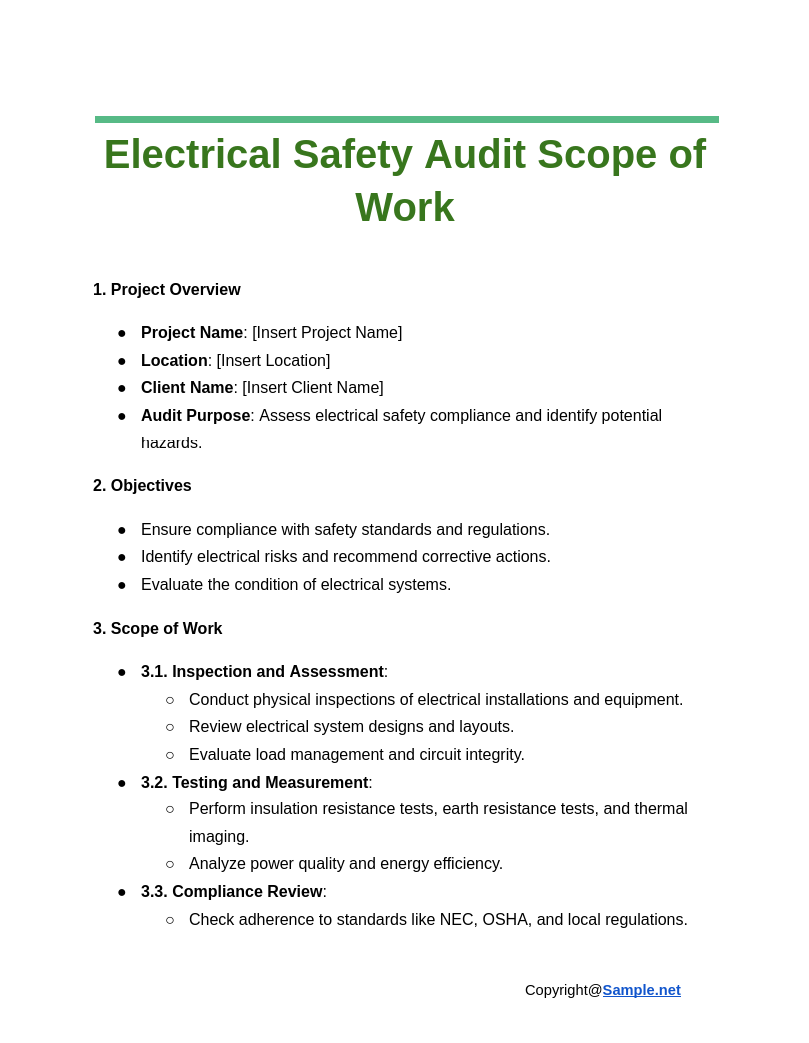
Electrical Safety Audit Scope of Work
download now -

Electrical Engineer Scope of Work
download now -
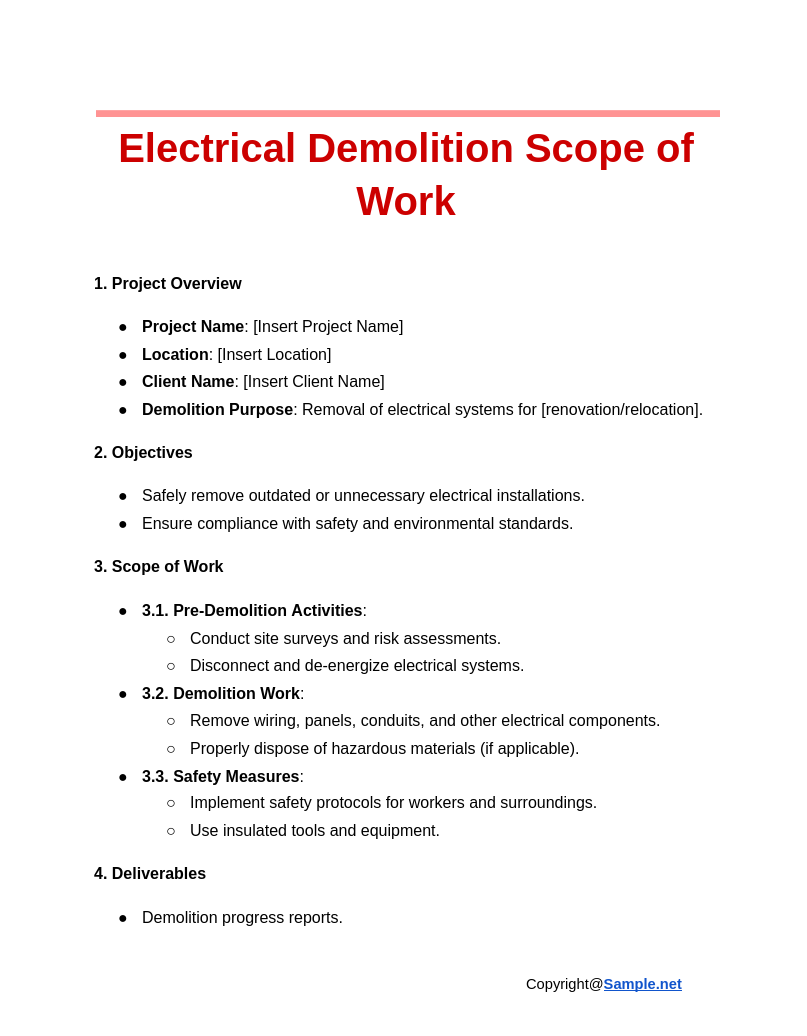
Electrical Demolition Scope of Work
download now -
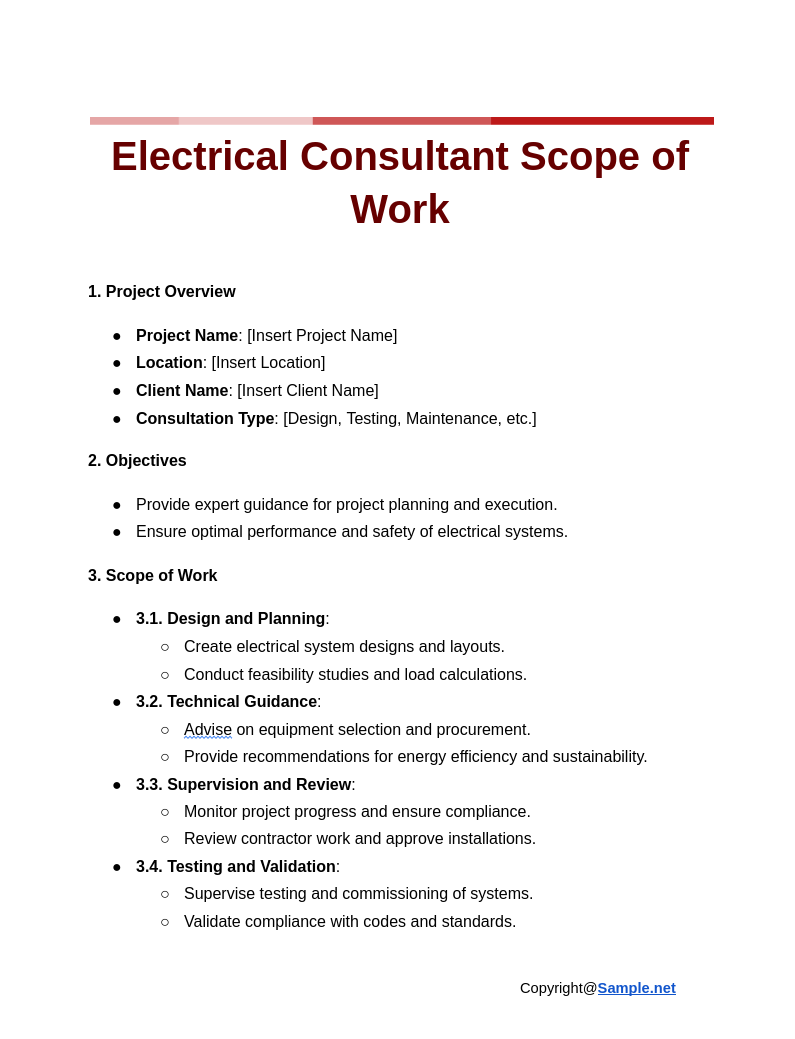
Electrical Consultant Scope of Work
download now -
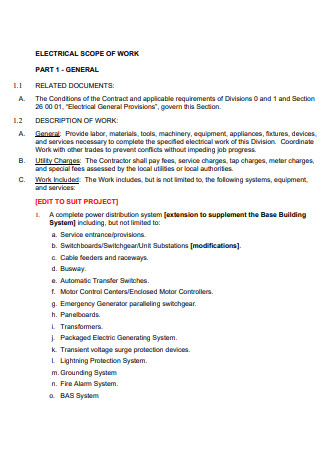
Electrical Scope of Work Template
download now -
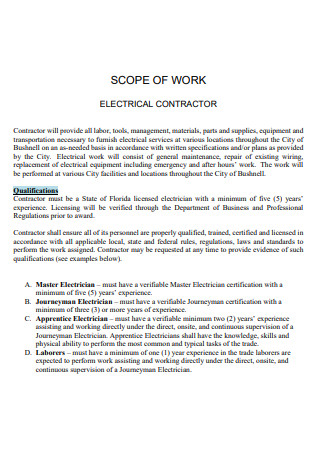
Electrical Contractor Scope of Work
download now -
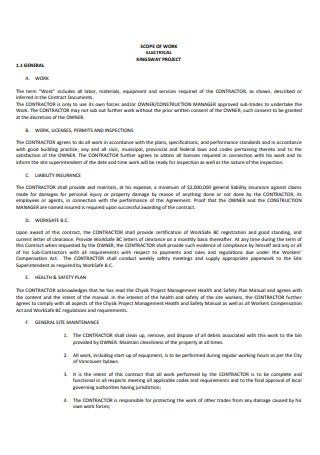
Electrical Project Scope of Work
download now -
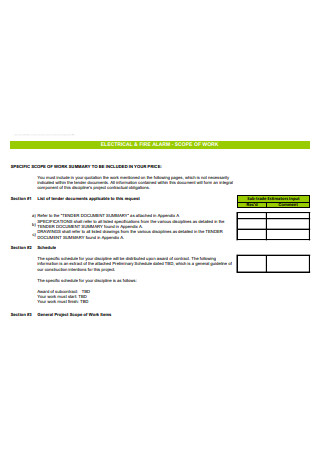
Electrical and Fire Alarm Scope of Work
download now -
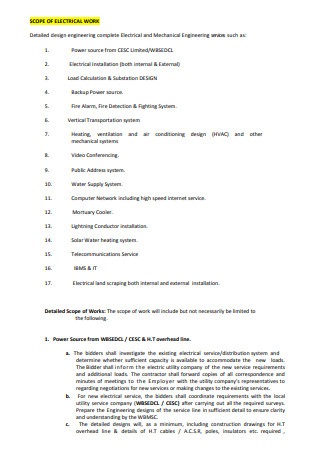
Basic Electrical Scope of Work
download now -
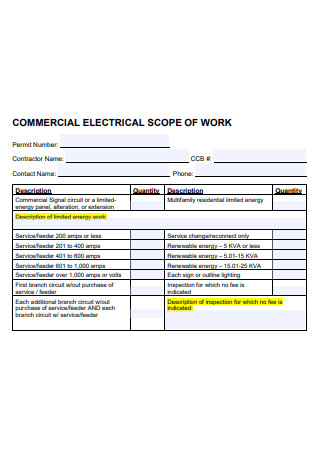
Commercial Electrical Scope of Work
download now -
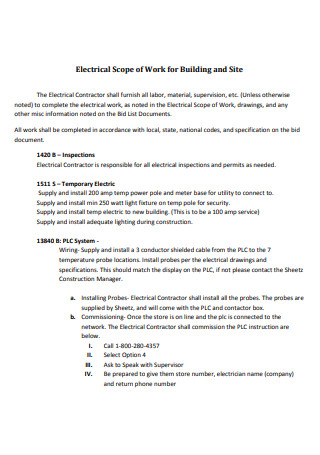
Electrical Scope of Work for Building and Site
download now -
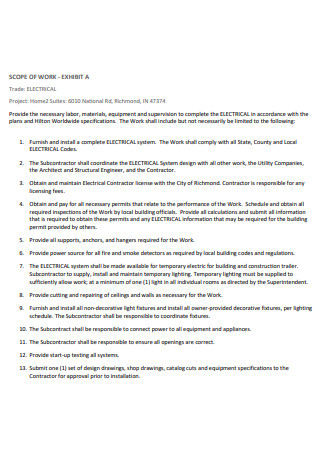
Electrical Scope of Work in PDF
download now -
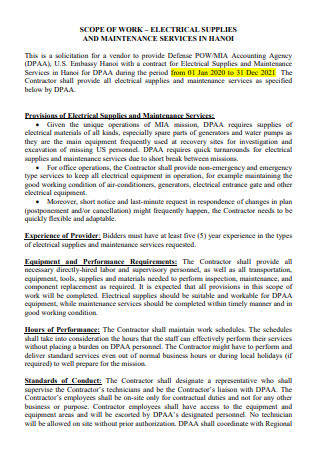
Electrical Supplies Scope of Work
download now -
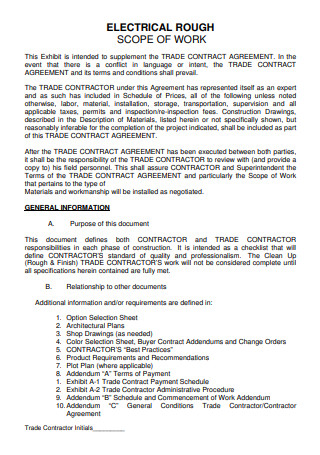
Electrical Rough Scope of Work
download now -
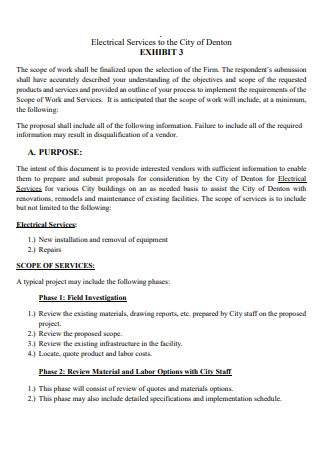
Electrical Services Scope of Work
download now -
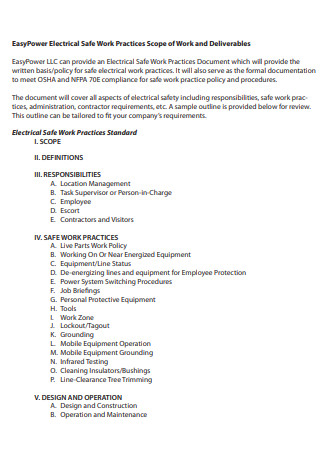
Electrical Safe Work Practices Scope of Work
download now -
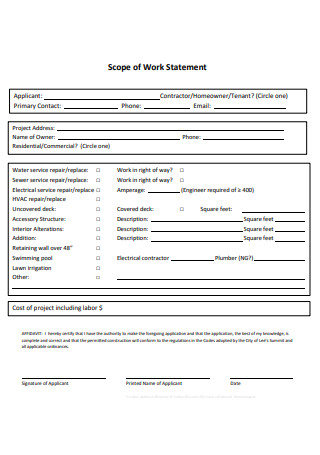
Electrical Scope of Work Statement
download now -
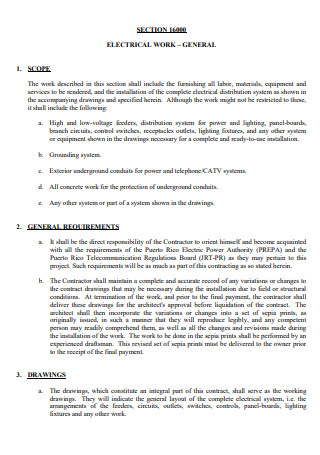
General Electrical Scope of Work
download now -
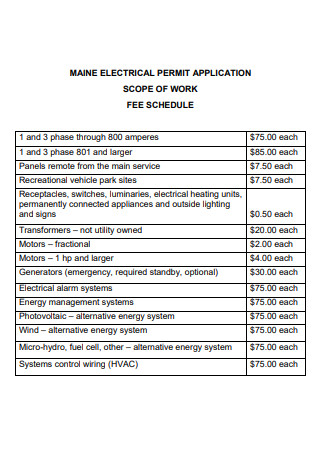
Electrical Fee Schedule Scope of Work
download now -
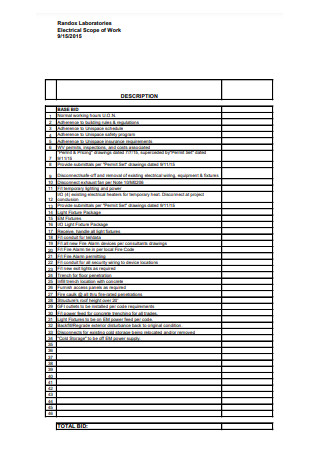
Laboratories Electrical Scope of Work
download now -
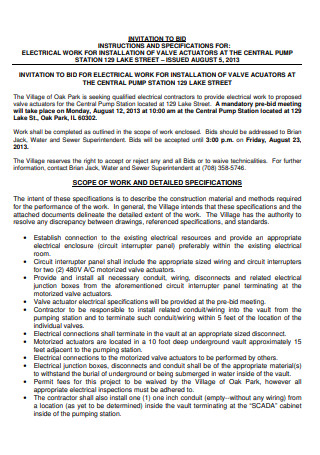
Electrical Scope of Work For Installation
download now -

Electrical Maintenance Services Scope of Work
download now -
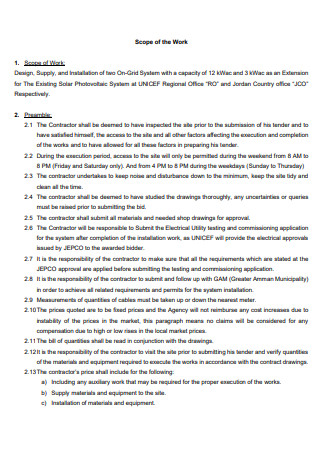
Electrical Scope of Work Example
download now -
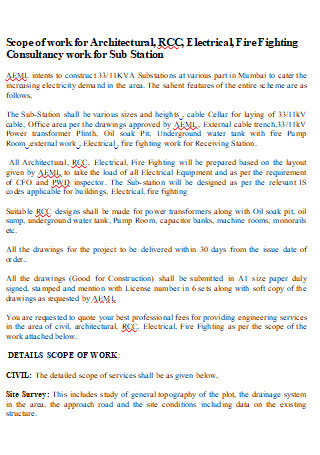
Printable Electrical Scope of Work
download now -
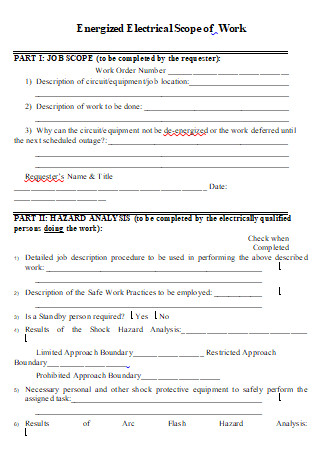
Electrical Scope of Work in DOC
download now
FREE Electrical Scope of Work s to Download
Electrical Scope of Work Format
Electrical Scope of Work Samples
What is an Electrical Scope of Work?
Purposes of the Electrical Scope of Work
How to Create an Electrical Scope of Work
FAQs
What are the types of electrician certifications?
How do you differentiate Scope of Work from Statement of Work?
What are some types of electrical installations?
When writing a scope of work, how long should it be?
How does the electrical scope of work affect project budgeting?
What happens if an electrical scope of work is incomplete?
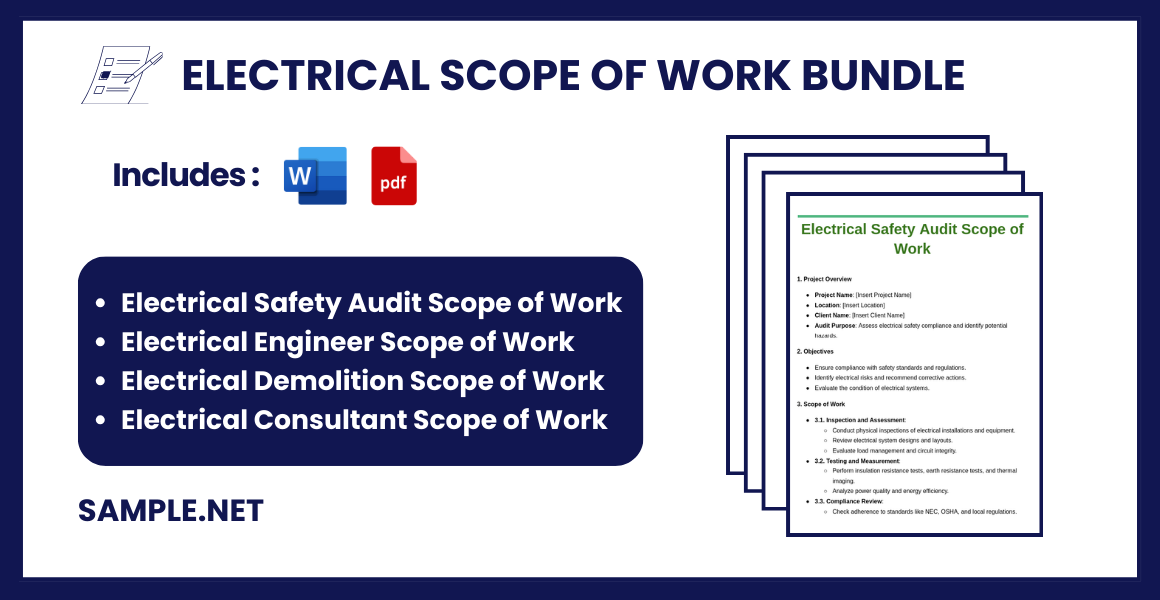
Download Electrical Scope of Work Bundle
Electrical Scope of Work Format
1. Project Overview
- Project Name: [Insert Project Name]
- Location: [Insert Location]
- Client Name: [Insert Client Name]
- Project Duration: [Insert Timeline]
- Project Summary: Brief description of the project objectives and the role of electrical work.
2. Purpose
- Outline the purpose of the electrical work, including any specific goals, requirements, or outcomes to be achieved.
3. Scope of Work
- 3.1. General Description
Overview of the electrical work involved, such as installation, testing, and commissioning of electrical systems. - 3.2. Specific Tasks
- Design and Engineering:
- Prepare electrical designs and drawings.
- Conduct load analysis and calculations.
- Supply of Materials:
- List of materials to be provided (e.g., cables, switches, panels, conduits, fixtures).
- Installation:
- Wiring, cabling, and mounting of equipment.
- Installation of electrical panels, lighting systems, and power outlets.
- Testing and Commissioning:
- Conduct inspections, tests, and certifications for compliance.
- Maintenance (if applicable):
- Specify if ongoing maintenance is included.
- Design and Engineering:
4. Deliverables
- List of key deliverables, such as:
- Electrical design drawings
- Test reports
- As-built diagrams
- Certification of compliance
5. Standards and Codes
- Specify applicable standards, such as:
- National Electrical Code (NEC)
- International Electrotechnical Commission (IEC) standards
- Local building codes and regulations
6. Exclusions
- Clearly mention what is not included in the scope, such as:
- Procurement of utility permits
- Civil works like trenches or foundation installations
7. Responsibilities
- Client Responsibilities:
- Provide site access and utility information.
- Approve designs and documentation.
- Contractor Responsibilities:
- Execute electrical work as per approved designs.
- Maintain safety and compliance.
8. Safety Measures
- Detail safety protocols, such as:
- Use of personal protective equipment (PPE)
- Compliance with OSHA standards
- Emergency response plans
9. Timelines
- Provide a detailed schedule for:
- Milestone activities (e.g., installation, testing, handover)
- Deadlines for deliverables
10. Payment Terms
- Payment milestones tied to project progress:
- Initial payment
- Progress payments
- Final payment upon completion
11. Acceptance Criteria
- Define how the work will be reviewed and approved, including:
- Inspection protocols
- Testing benchmarks
- Final sign-off process
12. Appendices
- Attach relevant documents, such as:
- Design schematics
- Bill of materials (BOM)
- Work schedules
What is an Electrical Scope of Work?
A scope of work is a type of document that clearly states an area in an agreement or in a contract the type of work to be done and the tasks that are listed in order for the work to be accomplished. It is a whole of everything – from the work details, schedules, terms, exclusions, and most importantly, the expected smart goal or outcome of the work or project that is to be performed. A scope of work should also contain deliverables (if applicable), milestones, and reports.
An Electrical Scope of Work refers to the tasks that are to be performed by the qualified electrician or specialist that is hired. It also identifies the kind of project that the electrician is to expect and the equipment or apparatuses that are needed in the task. This document acts as a guide to make the electrician’s work more streamlined and efficient, and this document also provides a timetable to make sure that the tasks listed are completed on time. You can also see more on Facility Services Scope of Work.
Purposes of the Electrical Scope of Work
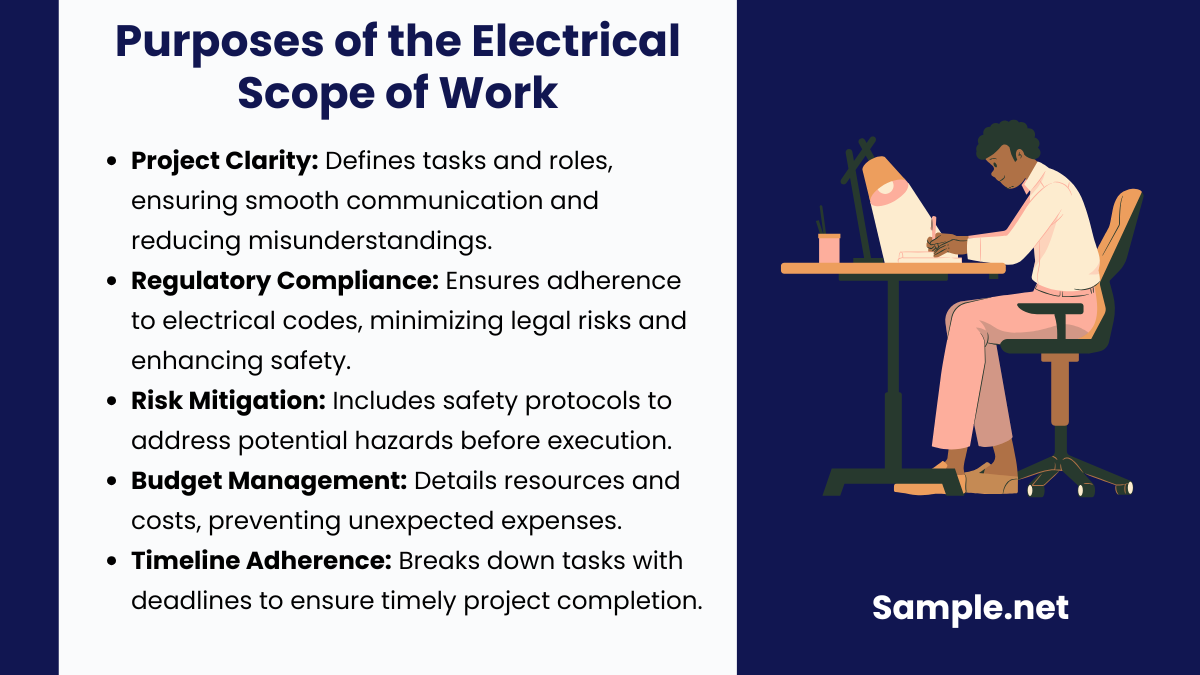
1. Project Clarity
The electrical scope of work provides a clear understanding of all tasks and deliverables, ensuring that every stakeholder, from contractors to project managers, knows their specific roles and responsibilities. This clarity helps streamline project communication and reduces misunderstandings. You can also see more on Work Statements.
2. Regulatory Compliance
By detailing the requirements and adherence to industry standards, the scope of work ensures the project complies with local and national electrical codes. This minimizes legal risks and guarantees safety during and after project completion.
3. Risk Mitigation
Safety protocols and hazard identification measures included in the scope of work help reduce risks associated with electrical installations. This proactive approach ensures that all potential dangers are addressed before project execution. You can also see more on Architectural Scope of Work.
4. Budget Management
The document outlines resource allocation, material requirements, and labor needs, which helps in creating an accurate budget. It prevents unexpected expenses by providing a detailed financial framework for the project.
5. Timeline Adherence
By breaking down the project into phases and setting deadlines for each task, the electrical scope of work ensures the project is completed within the specified timeline. This helps avoid costly delays and maintains client satisfaction. You can also see more on Renovation Scope of Work.
Importance of Electrical Scope of Work
1. Project Clarity: Defines roles, tasks, and deliverables for seamless execution.
2. Regulatory Compliance: Ensures adherence to electrical codes and safety standards.
3. Safety Assurance: Addresses potential hazards through detailed safety protocols.
4. Resource Management: Optimizes allocation of materials, labor, and time.
5. Timeline Adherence: Facilitates on-time project completion with clear milestones.
6. Accountability: Assigns responsibilities and establishes deliverable expectations.
7. Cost Control: Prevents unexpected expenses with precise budgeting.
8. Client Satisfaction: Aligns project outcomes with client needs for better trust. You can also see more on Fire Alarm Scope of Work.
How to Create an Electrical Scope of Work
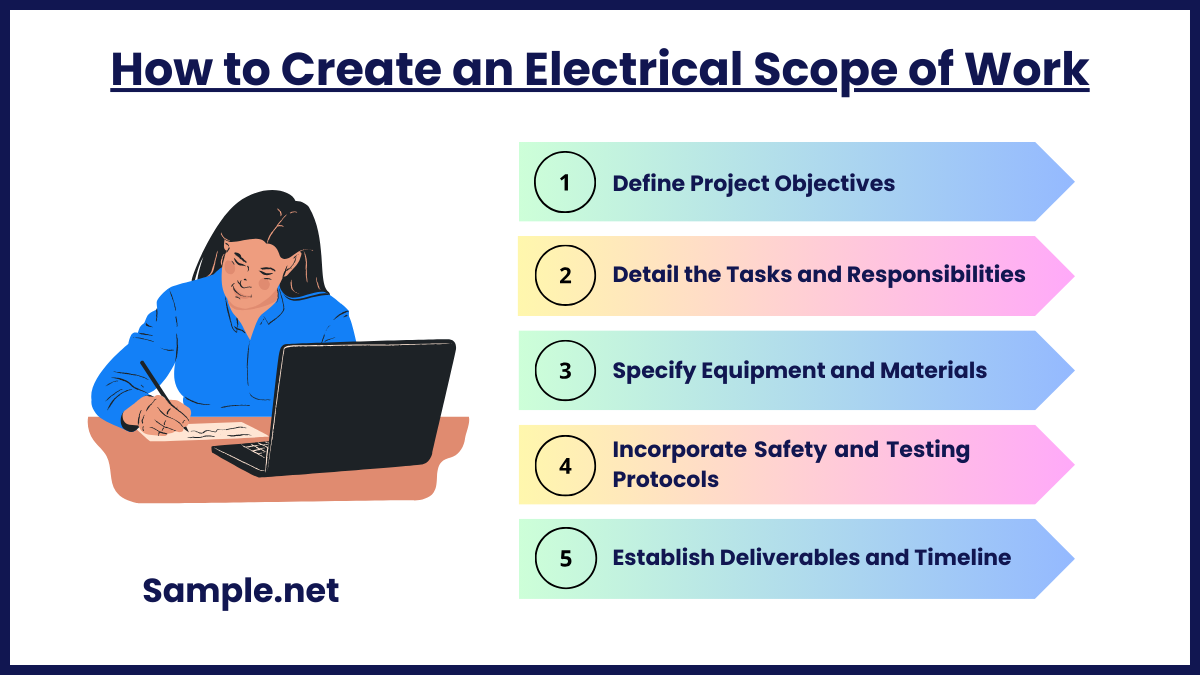
Step 1: Define Project Objectives
Begin by clearly identifying the project’s purpose, goals, and expected outcomes. Collaborate with stakeholders to gather requirements, such as the type of property, the specific systems needed, and any special considerations. Document this information as the foundation for the scope of work.
Step 2: Detail the Tasks and Responsibilities
Break the project into manageable tasks, such as design, wiring, equipment installation, and testing. Assign responsibilities to contractors, electricians, and engineers for each task. Ensure the tasks include estimated timelines and deliverables for accountability. You can also see more on Roofing Scope of Work.
Step 3: Specify Equipment and Materials
List all required materials, tools, and equipment. Include specifications such as approved brands, quantities, and compliance with industry standards and local regulations. This step ensures consistency and quality during the project.
Step 4: Incorporate Safety and Testing Protocols
Develop a plan for safety measures, including risk assessments and compliance with electrical codes. Outline procedures for testing and inspection at various stages of the project to ensure quality and safety. You can also see more on Demolition Scope of Work.
Step 5: Establish Deliverables and Timeline
Define clear milestones and deliverables for each phase of the project, such as schematic designs, progress reports, and final certifications. Include a detailed timeline with deadlines for each task, ensuring efficient workflow and timely project completion.
An electrical scope of work is crucial for achieving project efficiency, safety, and regulatory compliance. By outlining roles, tasks, and expectations, it minimizes risks and ensures smooth execution. Whether it’s a residential, commercial, or industrial project, a well-crafted scope of work acts as a guiding framework, aligning all stakeholders with the project’s goals. Its importance lies in providing clarity, preventing delays, and guaranteeing quality results. Yuo can also see more on Interior Design Scope of Work.
FAQs
What are the types of electrician certifications?
There are three types of certifications, which are the following:
- Apprentices – An apprenticing license is required in order to be an apprentice electrician. Once it is obtained, he/she is now eligible and is to be supervised by the senior electricians.
- Journeyman – This certification enables the holder to work on larger and more complex projects without the need for any kind of supervision. They can also train apprentices who are aiming for journeyman certification.
- Primary Electrician – The highest form of certification for an electrician. Having this certificate enables them to work on commercial jobs, as well as manage electricians who are still apprentices or journeymen. Furthermore, they are also responsible for planning electrical projects and assigning tasks to other workers.
How do you differentiate Scope of Work from Statement of Work?
In simple terms, a scope of work is basically written inside the statement of work as it presents the clear and concise process in the accomplishment of the specific goals of the project. In comparison, a statement of work generally contains more comprehensive details about the major goals and objectives of a certain project. You can also see more on Work Estimate.
What are some types of electrical installations?
- Residential installations – focuses on electrical work catering to houses
- Commercial installations – mainly deals with more extensive projects, such as malls, industrial establishments, offices, and big corporation buildings
- Vehicular installations – talks about electrical services for cars, boats, buses, etc. focusing on their respective navigation or air conditioning systems.
When writing a scope of work, how long should it be?
The length of a scope of work depends on the project that is to be undertaken. When writing a scope of work, it is important to keep in mind all the necessary details of the tasks in the project. However, it is also important that you should not write too much and go overboard with too many unnecessary factors. A very long scope of work will surely take time for the contractor to read and verify, and will inevitably lead to delays in working the project. You can also see more on Scope of Work Kitchen Remodel.
How does the electrical scope of work affect project budgeting?
The scope of work provides detailed insights into required resources, materials, and labor. This helps in accurate budgeting and reduces the chances of unexpected expenses during execution.
What happens if an electrical scope of work is incomplete?
An incomplete scope of work can lead to miscommunication, delays, cost overruns, and non-compliance with safety regulations, potentially causing project failure. You can also see more on Work Samples.
